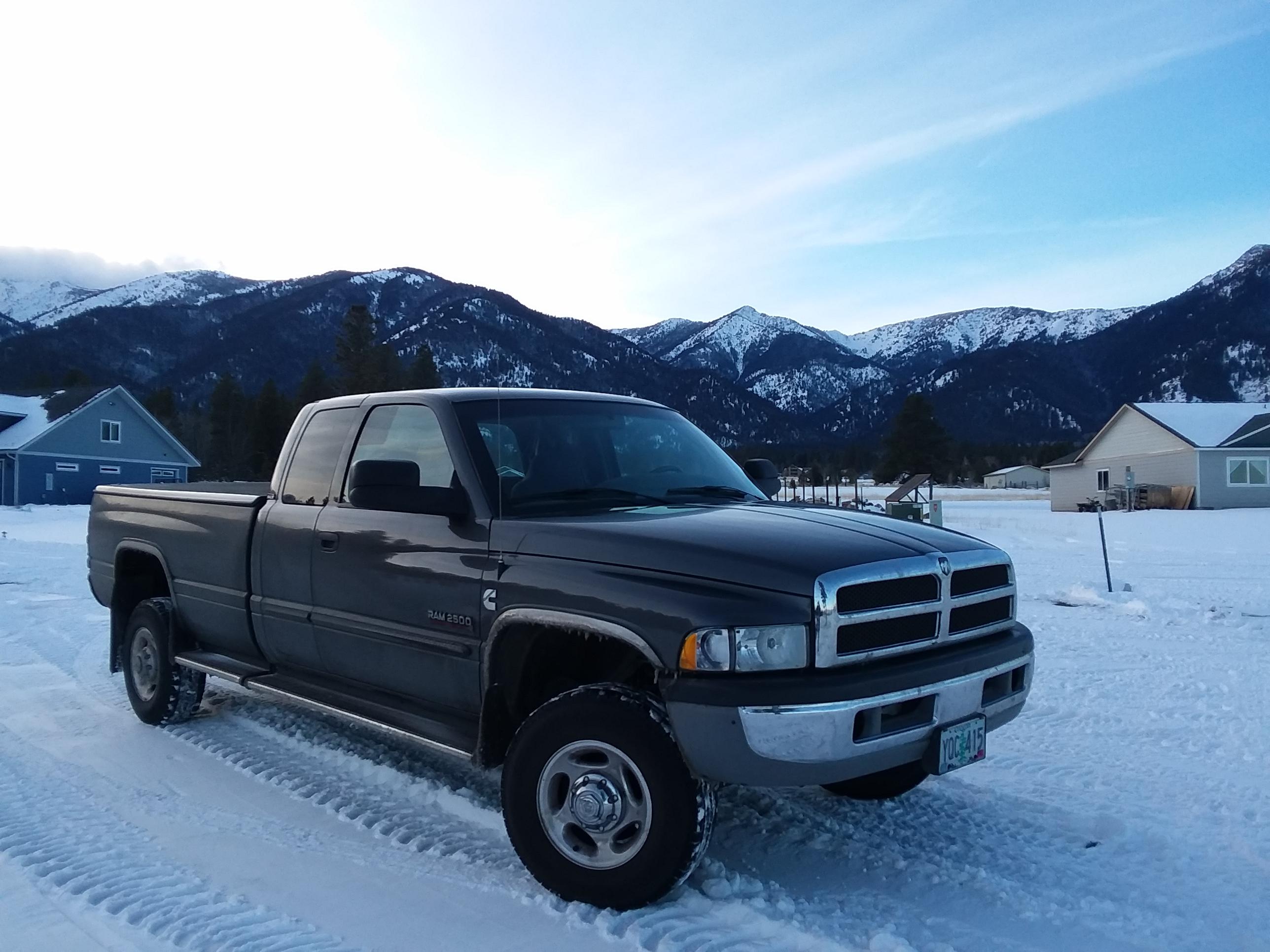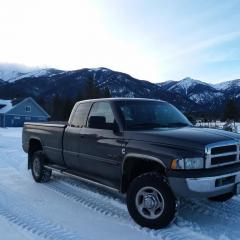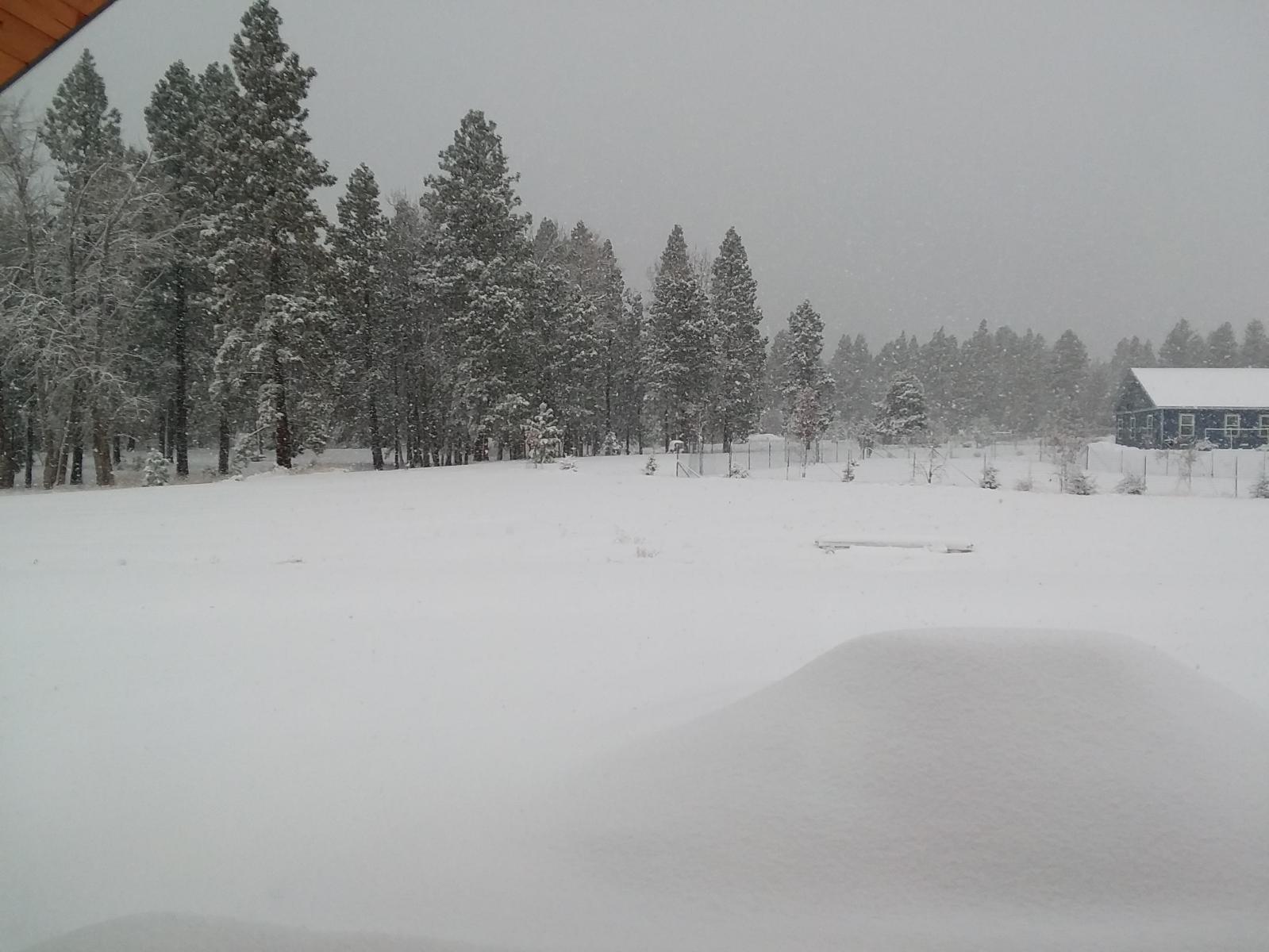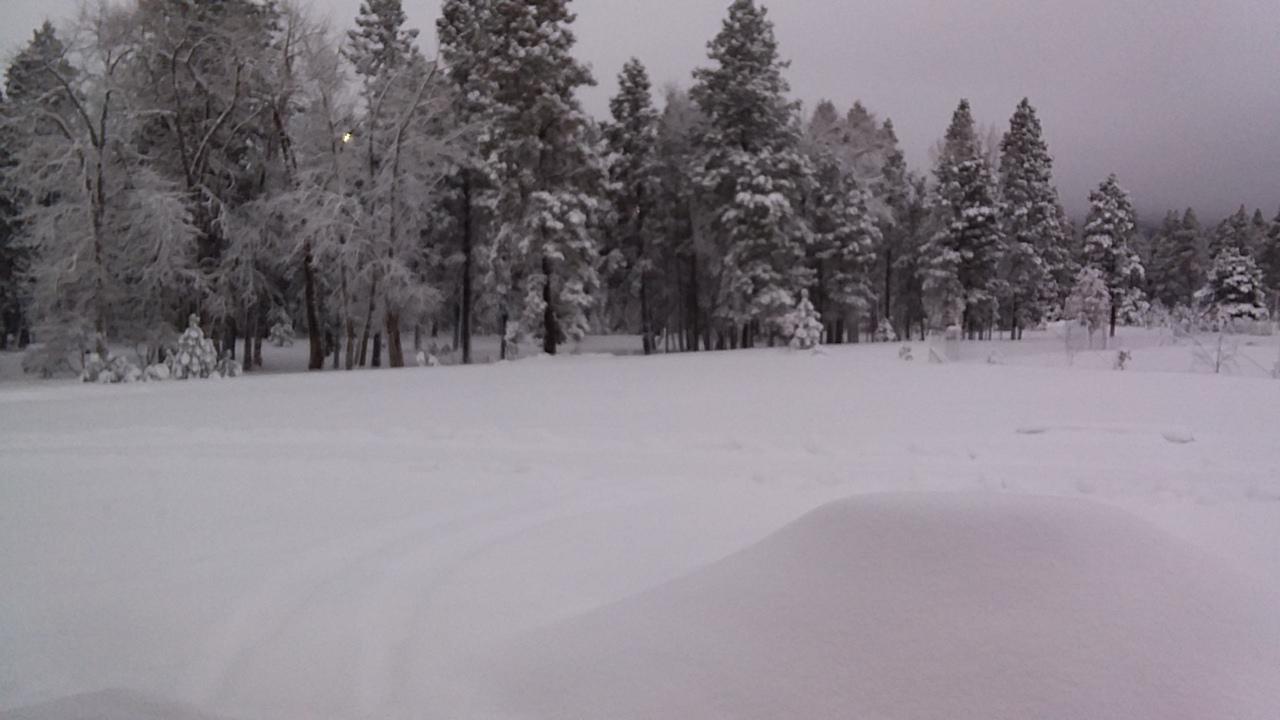
Everything posted by Tractorman
-
Overload Springs......and Happy Thanksgiving
Good suggestions and and questions that need to be answered from @AH64ID. One more question to add. Is your camper an all season camper with a basement? If so, this raises the center of gravity considerably. - John
-
Overload Springs......and Happy Thanksgiving
That is a great solution! I considered doing something like that when I had my slide-in camper. I should have done it, but I never followed through. I sold that camper about six years ago and bought a 19 foot travel trailer with a single slide. My GCW is now 12,000 lb (only 1,000 lb more than with slide-in camper) and I now have four braking axles and a low center of gravity - much more relaxing to tow. - John
-
Overload Springs......and Happy Thanksgiving
Am I missing something here? My truck empty: Front axle - 4,400 lb. Rear axle - 3,050 lb (air bags at 5 psi or less), 9000 series rancho shocks - rear on 3, front on 5 Gross weight - 7,450 lb My truck with slide-in camper: Front axle - 4,850 Rear axle - 6,150 (50 psi in air bags) 9000 series rancho shocks - rear on 8, front on 5 or 6 Gross weight - 11,000 lb With slide-in camper and 50 psi in the airbags, the truck handled well. If I recall, the rear part of the overload spring made contact and the front part had a small gap. Heavier bumps engaged the overloads. - John
-
First experience with death wobble!
Sounds like a faulty bridge to me. That was an attempt at humor. Actually, it seems that your solution was a good one. - John
-
First experience with death wobble!
Just curious - did you find an obvious cause for the death wobble when you inspected and replaced those items? Or, was it more that they just looked like they needed replacement, so you replaced them? Just wondering because for many the death wobble has been hard to figure out. @Doubletrouble, be sure to let us know what you figure out. So far I have been fortunate and have never experienced the death wobble and I know that I am not exempt from it occurring to me. - John
-
First experience with death wobble!
Death wobble can be hard to diagnose because there can be many causes and because the right conditions must be present to make it occur. Some things that I would be looking at.... Do you have oversize tires and wheels? Heavy rotating masses can enhance the triggering of death wobble. Has the truck been lifted? Are tires worn evenly? Every steering linkage joint and every suspension linkage joint should be inspected for looseness including shock absorber mounts and shock absorber condition. Sometimes minor play or wear on multiple components can trigger the event. - John
-
VP44 Overflow Valve
I didn't know the overflow valve was made both ways. It would be an interesting test to see if the results were different. - John
-
VP44 Overflow Valve
I believe the small hole is for venting air such as after a fuel filter change when using the bump start feature. I also believe that when the engine is running at any rpm and if lift pump pressure is below 14 psi that the overflow valve is still in full operation because the lift pump feeds directly into the inlet of the positive displacement internal vane pump. The flow out of the vane pump is regulated at a much higher pressure and is in common with the 14 psi overflow valve as well as other components inside the VP44. It is my belief that as soon as the engine starts, the 14 psi overflow valve is in operation. - John
-
VP44 Overflow Valve
Let us know what you find.... don't leave us hangin'! - John
-
VP44 Overflow Valve
It seems to me that there are three possible things to try.... 1. Replace the overflow valve - usually I don't recommend parts changing, but sometimes when diagnostic tools are not available, changing an inexpensive is a good solution. 2. Test the overflow following Mike's procedure. 3. Install a temporary mechanical gauge and strap it to the windshield wiper arm and test drive for a day or two. This should confirm whether or not you regular gauge is giving you reliable data. Typically, the overflow valve is fairly bullet proof. - John
-
Bosch VP44 Injection Pump Overflow Valve
I think the article is informative and factual based on limited information available regarding the VP44 fuel injection pump operation. Appreciate you taking the time to provide this information.
- 1 comment
- 3 reviews
-
-

- 2
-
-
Another grid heater thread
Just want to make sure - are you performing each voltage check while the grid heaters are cycled on? This would be the proper procedure. Also, are you using the same ground point for each test? - John
-
Acceptable AC voltage with grid heaters on
My wife and I just moved into our newly built house just 10 miles northwest of Baker City. From @Mopar1973Man' place, it is 86 miles (compass heading 251 degrees) as the crow flies - much farther if you use the highway. Friday, November 13th - first round 8 inches Sunday, November 15th. - second round 7 inches Sunrise - yesterday morning - John
-
Swapping a nv 4500 for a 5600
@jlwelding, are you considering the swap for your 2001 truck in your signature (doesn't show transmission)? If so, I would definitely consider the swap, especially since the truck weighs in at 10,000 lbs. NV4500 - input torque 460 lb/ft, dry weight 195 lb. NV5600 - input torque 550 lb/ft, dry weight 360 lb. Compare gear ratios. First gear and the two top gears are virtually the same for both transmissions. However, the NV5600 offers one more gear where you need it, making it a close ratio transmission. You will feel the difference in performance., especially getting a load moving from a stop on an upgrade. I am approaching 350,000 miles on my truck and I have had no problems with the transmission. Of course, I am no where near @Mopar1973Man's 500 hp, but my truck has been known to break traction on a snowpack. - John
-
Injector Tips/ Nozzles and Wear Factors
I could see that why that setup would be and absolute "must" for a marine application - water all around and high dew points all of the time. Although, on the upside should a breakdown occur, there is usually plenty of parking, but on the downside, most places the anchor won't reach the ground. - John
-
Injector Tips/ Nozzles and Wear Factors
This is not a case in which you are right or wrong. Over the years there have been many posts on this site (and other diesel sites as well) that have portrayed a strong belief in that if the lift pump does not maintain over 14 psi at all times, then fuel return flow from the VP44 is greatly diminished, thus causing damage to the VP44. I do not believe that this is the case at all, and here is why: The lift pump flow feeds directly into the suction side of the internal vane pump (inside the VP44 injection pump). Since this vane pump is a positive displacement pump, engine rpm determines the input flow and the output flow of this vane pump. The lift pump can and does provide a positive charge to the vane pump inlet, but the lift pump cannot push more flow through a positive displacement pump than the positive displacement pump is flowing, hence the pressure rise on the fuel gauge. The fuel flowing out of the internal vane pump is subject to a much higher pressure relief valve setting (I've read somewhere between 120 -200 psi, @Mopar1973Manmentions 60 psi). It is a good portion of this flow from the internal vane pump that makes its way over the 14 psi overflow valve and returns to the fuel tank. @wil440, thank you for your timely post. Your test supports what I am trying to portray. - John
-
Injector Tips/ Nozzles and Wear Factors
Personally, I would not be concerned about the pressure drop generated by adding another filter in the circuit. If you add the filter, the pressure drop will be the same across the added filter regardless of the lift pump's location. I think a frame mounted lift pump will be more efficient and you would always have a positive pressure supply to the added filters - that also equates to less chance of drawing in air. By the way, five years ago I removed my in-tank lift pump and installed a used FASS lift pump on the frame rail - not added filters, just relocated the lift pump. I believe a lot of folks are putting way too much emphasis on a specific fuel pressure gauge reading. Having a pressure gauge at the inlet of the VP44 injection pump will tell you that there is specific pressure at a specific time, but it does not say anything about a specific flow. However, it does tell you that the lift pump must be be trying to flow more than the VP44 is accepting at any time, otherwise the pressure would not be there., I say this because there are some very important unknown pieces of information regarding the vane pump inside the VP44 injection pump. For example: What is the internal vane pump's displacement (in gallons / hour) at a specific engine rpm? What pressure is the internal vane pump's relief valve set? Just knowing this information would go a long way to gaining a better understanding of how this fuel system works. - John
-
Using return fuel line for additional filter?
Never restrict fuel return lines or offer a potential fuel restriction such as using a filter in the return line. Diesel fuel injection pumps / lift pump systems are essentially hydraulic systems. The rules of fluid power flow and pressure apply to both. The bulk of the fuel system is plumbed is a series circuit from the lift pump, through the VP44 injection pump and the return lines. Any restriction added to the return raises the pressure upstream in order to push the fuel through the line. Flow is constant and pressure is accumulative in a series circuit. You won't see it on a fuel pressure gauge on the lift pump circuit because the gage compares fuel pressure in the line to atmospheric pressure. If a filter on a return line circuit became seriously blocked, fuel lines and components upstream could see pressures higher than they were designed for - such as VP44 pump case, seals, and low pressure return fuel lines. - John
-
NV4500 locked in 4th
I just removed my short shifter and re-installed my OEM shifter with a new bushing on the end. Shifting is back to normal. I never should have installed the short shifter. - John
-
Installing air springs, hose question.
Personally, I would not join the two rear airbags together with a T fitting. If they are joined, then truck lean will be accelerated while traveling through a curve because air will be transferred from one airbag to the other during the travel through the curve. The last thing I would want is additional body roll on a winding road while towing. - John
-
24 valve reman pump issues
@Me78569, thanks for that clarification - that does make sense. @Cumminsguy5.9, sorry about leading you in a non productive direction. - John
-
24 valve reman pump issues
(Fuel injection pump fuel valve circuit is monitored after current feedback monitoring is complete and average engine speed is greater than 700 RPM. DTC may be stored when Engine Control Module (ECM) does not receive a signal from the solenoid valve to indicate valve movement.) Is it possible there could be a wiring problem (broken wire, bad connection) in this circuit between the injection pump and the ECM? I have no experience with this particular problem, I am only asking this question based on the ECM's decision to set this code. - John
-
Hard start
@JAG1, I very much appreciate your approach for considering a different concept regarding the role of the lift pump in a VP44 system. I always want to give out the right information to the readers, even if it may differ from the current view. I am currently pursuing a way to show how the lift pump and the VP44 internal vane pump work together. Thank you, - John
-
NV4500 locked in 4th
I put a short shifter in my NV5600. I am going to replace it with a new regular throw shifter because of one issue. Being that the pivot point is higher than the OEM shifter (as you were thinking), the spring that aligns the shifter to the natural 3rd / 4th position loses its leverage because of the extra shaft length to the pivot point. Consequently, the shifter will not align itself to the 3rd / 4th position. This causes missed shifts. It really shows up during a down shift from 5th to 4th. If I didn't have this problem I would have really liked the short shifter. Granted, I have 345,000 miles on the NV5600, so maybe that spring is getting tired. Or, maybe it's just a side effect of a short shifter. But, I do know that the OEM shifter does not have that problem. - John
-
Hard start
Glad to hear the problem was a simple one. You will probably hear some differences of opinions here, but I think you are fine with 8-10 psi at WOT. Inside the VP44 injection pump is a vane pump that flows fuel to the internal workings of the VP44 and to the overflow valve. As long as the lift pump is delivering more fuel than the internal vane pump is consuming, there will always be a positive pressure at the inlet of the VP44. Since your lift pump is showing a positive pressure (8-10 psi) at wide open throttle, you should be in good shape. - John








